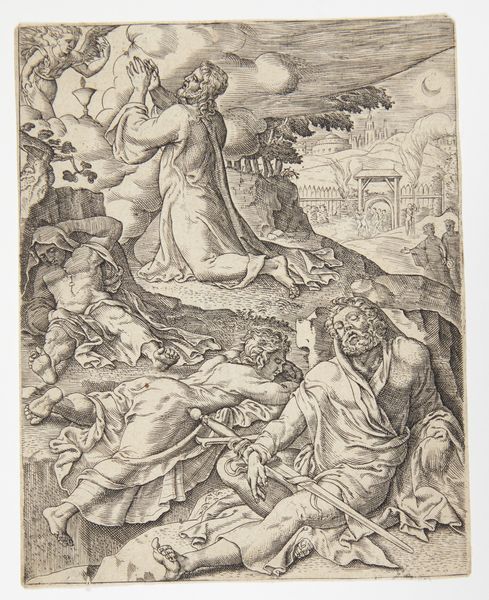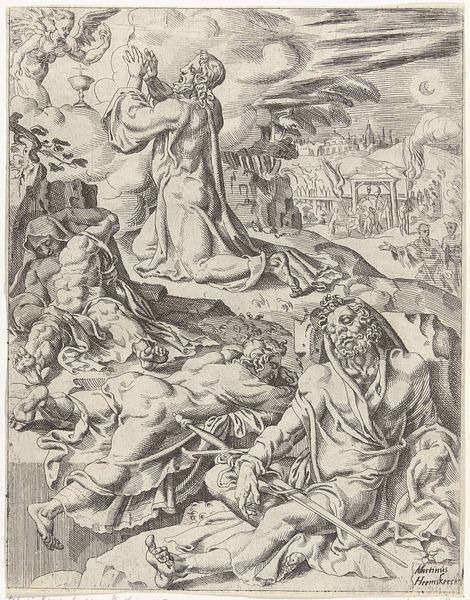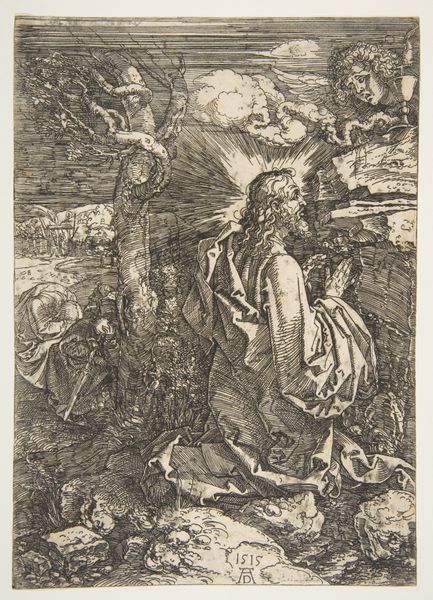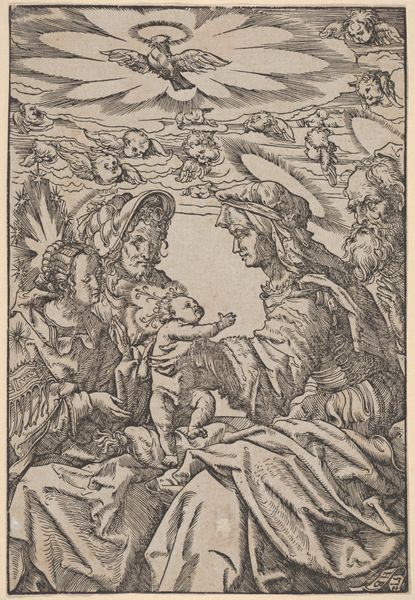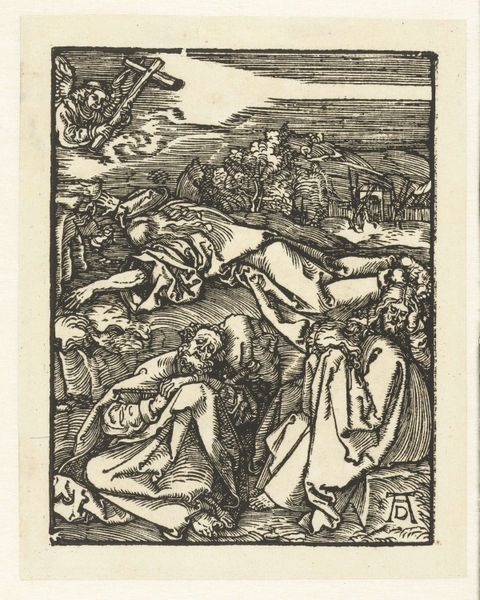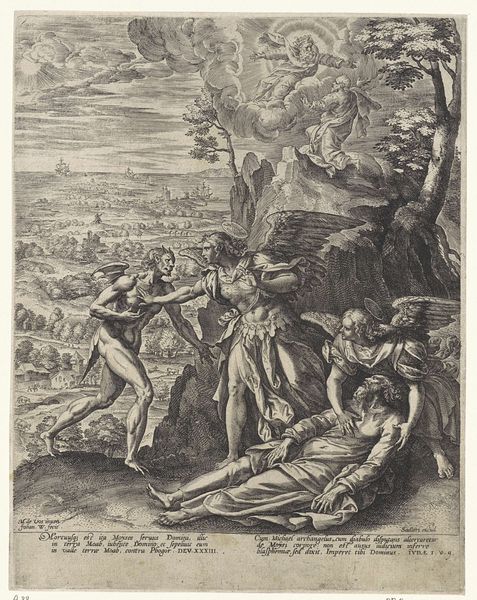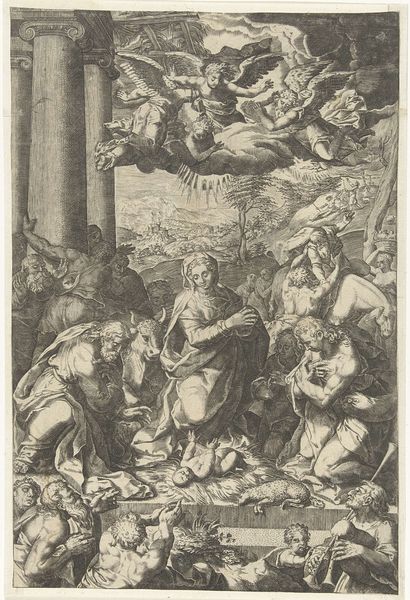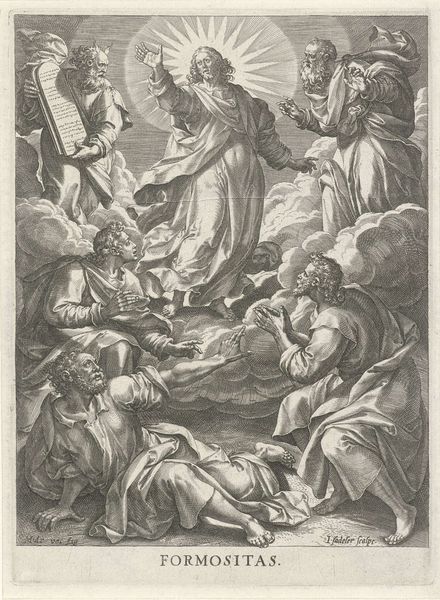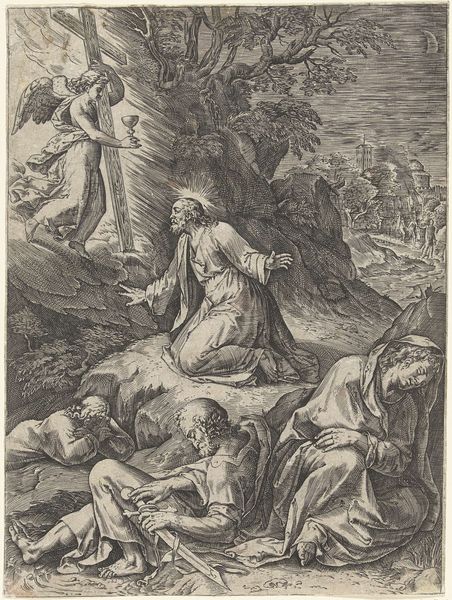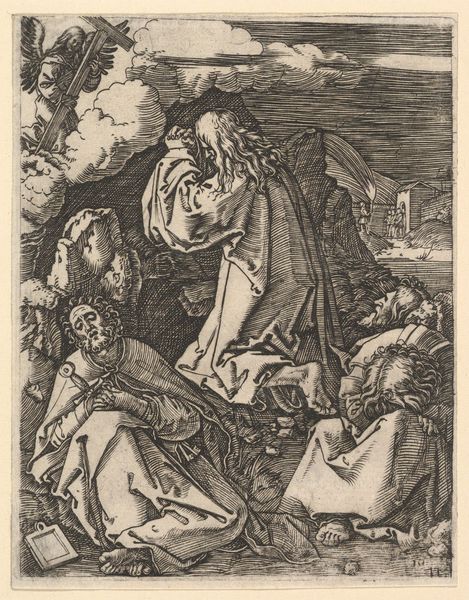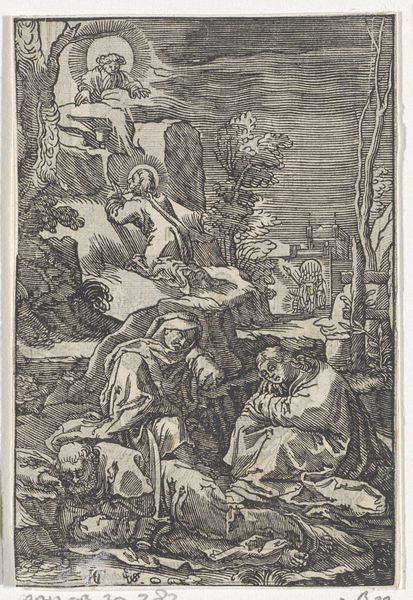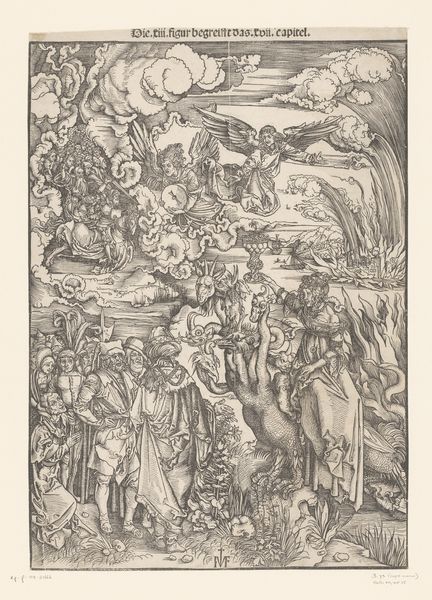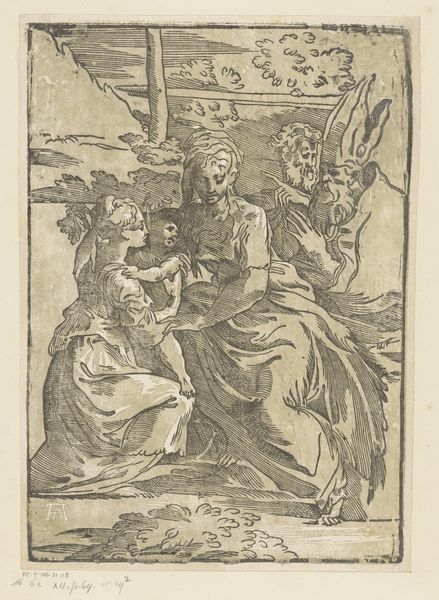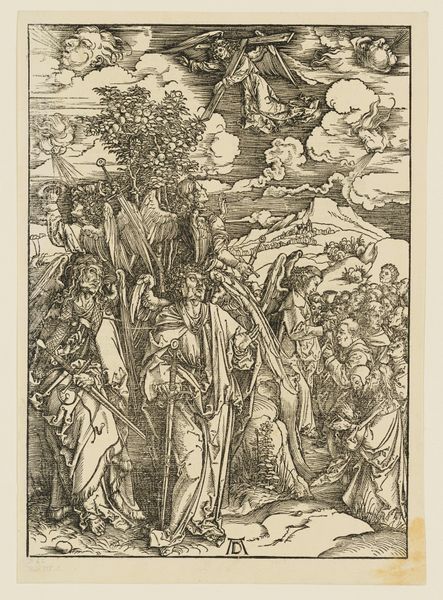
print, engraving
#
baroque
# print
#
old engraving style
#
figuration
#
line
#
history-painting
#
engraving
Dimensions: height 116 mm, width 92 mm
Copyright: Rijks Museum: Open Domain
Curator: Looking at this piece, one is struck by the almost dreamlike atmosphere achieved through such stark lines. Editor: Agreed. There’s a tangible emotional weight, an anxious anticipation that the engraving communicates so well through contrasting tones and a distinct linearity. I sense immense sadness, too. Curator: The artwork is "Christus in de hof van Getsemane," or Christ in the Garden of Gethsemane, an engraving made sometime between 1648 and 1657 by Christoffel van Sichem II, a Dutch artist whose baroque-style prints focused largely on religious scenes. This is now held in the Rijksmuseum collection. Editor: You see the city in the background; its depiction is symbolic, the representation of a "kingdom." Is it heaven or an earthly place in the religious scene, or perhaps both? It brings us closer to interpreting and assigning greater meaning to the artwork, no? Curator: I would say both! Look at how the light and shadow play around Christ's praying figure compared to the sleeping soldiers below. There's a spiritual light emanating from the cup-bearing angel, juxtaposed with the earthly slumber of the guards, implying that divine sacrifice stands apart from earthly concerns. Van Sichem has used line to amplify spiritual tension here. Editor: I also appreciate the engraver's employment of the 'old engraving style.' In earlier times, engravings possessed particular iconic meanings beyond simply documenting religious stories. Each character, even each visual element, had a meaning. Today, are viewers aware of that depth, I wonder? Curator: Probably not without some prodding! Though viewers from various eras have interpreted symbols differently depending on current contexts. Symbols’ power endures. It shows cultural memory that resonates, albeit with shifting meanings. Editor: Perhaps, if the purpose is there to understand the significance, we might become better viewers of it all, centuries later. Curator: Yes, by engaging with this history of imagery, we are not simply looking at Christ in the Garden of Gethsemane; we're understanding how generations visualized this pivotal moment, carrying it forward through their art.
Comments
No comments
Be the first to comment and join the conversation on the ultimate creative platform.
